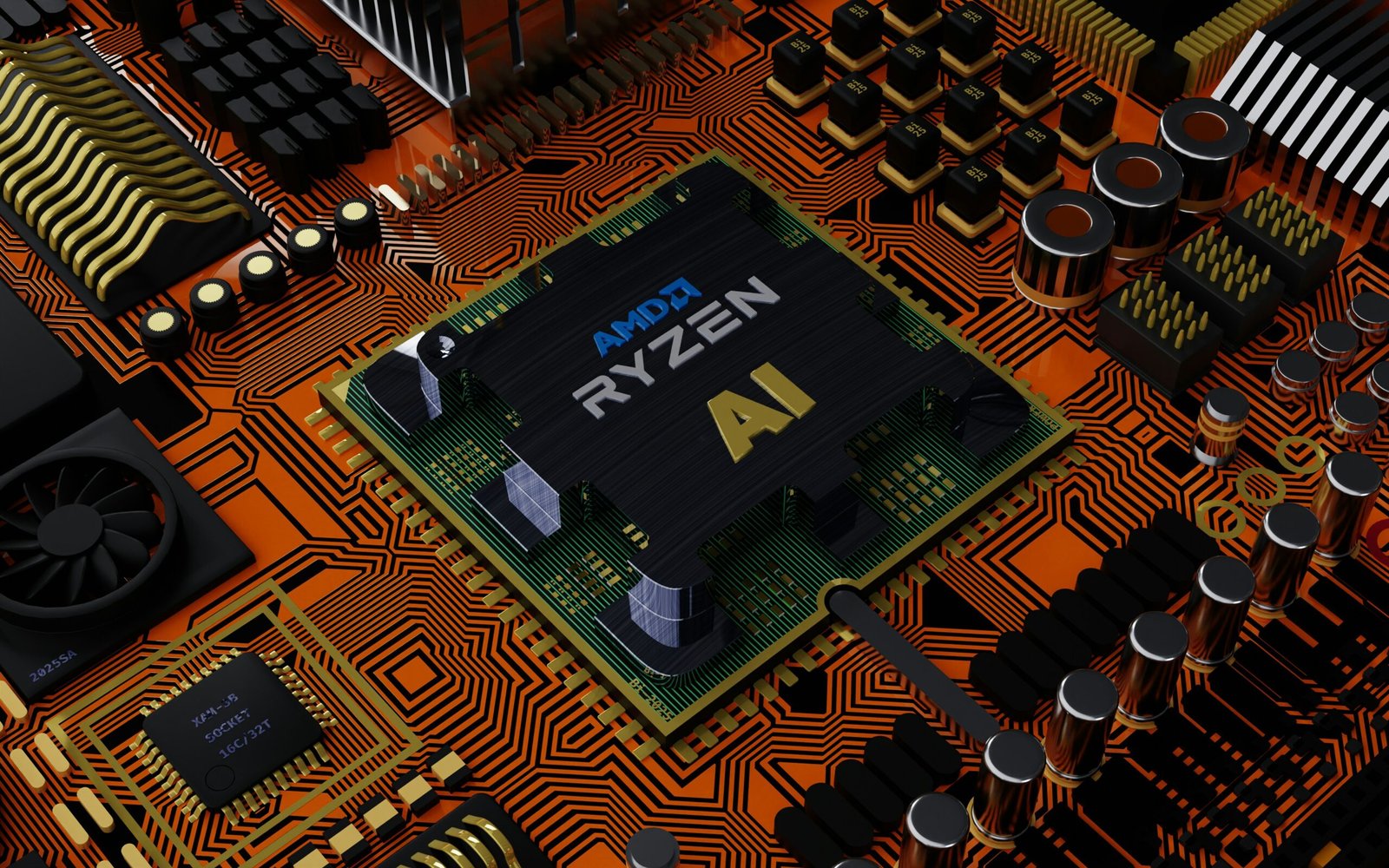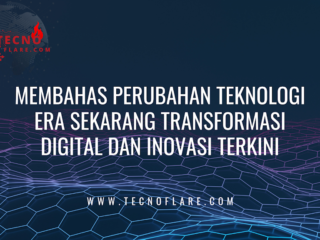Exploring Edge Computing: The Future of Data Processing
 Photo by BoliviaInteligente on Unsplash
Photo by BoliviaInteligente on Unsplash Introduction to Edge Computing
Edge computing is a distributed computing paradigm that brings computation and data storage closer to the location where it is needed. Unlike traditional cloud computing, which relies heavily on centralized data centers to process data, edge computing focuses on minimizing latency by processing data near the source of origin. This approach is particularly significant in today’s rapidly evolving technological landscape, where the volume of data generated by Internet of Things (IoT) devices continues to surge.
The rise of IoT has led to a substantial increase in the number of devices capable of generating real-time data. These devices range from smart home appliances to industrial sensors, each requiring immediate processing to derive valuable insights. By leveraging edge computing, organizations can address the growing demand for quick decision-making and data analysis. This proximity to data sources not only reduces the time it takes for data to travel to a cloud server but also alleviates bandwidth usage, making it an efficient solution for data heavy operations.
Furthermore, edge computing enhances the performance of applications that rely on real-time data processing. For sectors like healthcare, automotive, and manufacturing, where timely information is critical, implementing edge computing can be transformative. It enables these industries to operate more effectively by delivering quicker responses to changing conditions and improving overall system reliability.
Overall, the significance of edge computing is evident as it transforms the way data is handled and processed. By emphasizing local data processing and storage, it not only meets the immediate demands of IoT applications but also provides a scalable solution that aligns with the future of technology. Understanding the fundamentals of edge computing is essential for navigating the complexities of modern data processing needs.
How Edge Computing Works
Edge computing operates by decentralizing data processing, moving computation closer to the data source as opposed to relying solely on centralized data centers. This architecture consists of various components, including edge devices, gateways, and microdata centers, each playing a critical role in efficiently managing and processing data.
Edge devices are typically IoT (Internet of Things) devices, sensors, or smart appliances that generate data at the source. By processing this data locally, these devices reduce latency, enabling real-time applications crucial for tasks like autonomous driving or smart factory operations. Instead of sending all the data to a distant cloud server, edge devices filter and process relevant information, sending only essential data for further analysis.
Gateways serve as a bridge between edge devices and the central cloud infrastructure. They aggregate data from various edge devices, performing additional processing and evaluation. This minimizes the volume of data transmitted to the cloud server, optimizing bandwidth usage. The gateway can implement security measures, ensuring data integrity and protecting sensitive information during transmission.
Microdata centers further enhance the edge computing framework by providing localized data processing capabilities. These compact facilities deploy infrastructure closer to the end user, allowing for significant reductions in latency and enhanced data processing speeds. Within a microdata center, both compute and storage resources are available, allowing local processing while efficiently managing the processing load between edge devices and central cloud servers.
This balance ensures that high-demand applications can function smoothly, as processing is distributed intelligently. Consequently, this architecture of edge computing not only improves performance but also supports various sectors such as healthcare, manufacturing, and transportation, where immediate data processing is vital.
Benefits of Edge Computing
Edge computing has emerged as a compelling solution in the realm of data processing, providing several advantages that address the challenges of traditional cloud computing. One of the most significant benefits is reduced latency, which is crucial for real-time applications. As edge computing brings data processing closer to the data source, it minimizes the time it takes for data to travel, enabling immediate insights and responses. This is particularly beneficial in industries such as gaming, autonomous vehicles, and smart manufacturing, where split-second decisions can have a considerable impact.
Another key advantage is decreased bandwidth usage. By processing data at the edge, only the essential information is transmitted to central servers, reducing the volume of data sent over networks. This not only optimizes bandwidth utilization but also alleviates the strain on network infrastructure. For example, in healthcare, edge devices can process vast amounts of patient data locally, sending only critical information to the cloud for aggregation and analysis.
Enhanced data security and privacy are other notable benefits of edge computing. With sensitive information being processed on localized devices, there is an inherent reduction in the risk of data breaches during transmission. By limiting the amount of data sent over the internet, businesses can better manage user data privacy and compliance with regulations such as GDPR. Retail companies, for instance, are now using edge computing solutions to process transactions and inventory levels securely on-site.
Lastly, improved reliability is an essential benefit worth mentioning. Edge computing reduces dependence on a centralized server, mitigating the impact of network outages on operations. This decentralization allows for continuous function in scenarios with weakened connectivity, such as rural areas or during natural disasters. Overall, these advantages collectively underline the value proposition of edge computing across various sectors, driving innovation and efficiency in data processing.
Challenges and Limitations
Edge computing brings numerous advantages, but it also faces a range of challenges and limitations that can impact its widespread adoption. One significant hurdle is the complexity of deployment. Organizations must carefully plan and implement edge systems, which often requires specialized knowledge and technical expertise. The integration of edge devices with existing IT infrastructure may lead to compatibility issues and necessitate updates to legacy systems. This complexity can deter businesses, particularly smaller ones, from transitioning to edge computing.
Another challenge lies in managing a distributed infrastructure. As edge computing relies on a network of devices located closer to the data sources, maintaining consistent performance and functionality across all these devices can be daunting. Each edge node must be monitored and managed, often leading to increased operational overhead. The need for real-time monitoring and maintenance can also complicate efforts to scale the infrastructure efficiently.
Data consistency and security are critical issues that must be addressed. With data being processed at various edge locations, ensuring that all nodes maintain updated and synchronized information can be challenging. This scenario creates potential vulnerabilities, especially in environments where sensitive data is involved. Organizations must employ robust security measures to protect against data breaches and ensure compliance with regulations. Furthermore, edge devices’ technological limitations, such as lower processing power, battery life constraints, and reduced storage capabilities, can impede the effectiveness of edge computing solutions.
Scalability is another important consideration. While the distributed architecture of edge computing has the potential to enhance performance, scaling these systems can be complex. Adding new edge devices may introduce additional management challenges and could lead to inefficiencies in data processing if not appropriately configured. Addressing these challenges will be essential for organizations to fully harness the benefits of edge computing.
Use Cases Across Industries
Edge computing represents a significant advancement in data processing, offering various applications across multiple sectors. In the healthcare industry, for instance, edge computing facilitates remote patient monitoring through connected medical devices. These devices can gather real-time data on patient vitals and send it to healthcare providers with minimal latency. By processing data closer to its source, healthcare professionals can respond quickly to emergencies, thus improving patient outcomes and reducing hospital readmissions.
In the manufacturing sector, edge computing plays a crucial role in predictive maintenance. By deploying sensors on machinery, manufacturers can collect performance data and analyze it in real-time. This capability allows for the identification of patterns indicating potential failures before they occur. Consequently, manufacturers can schedule maintenance activities effectively, minimizing downtime and optimizing efficiency, ultimately leading to cost savings and enhanced productivity.
The transportation industry also reaps the benefits of edge computing, particularly in the development of autonomous vehicles. These vehicles rely on a network of sensors and cameras to monitor their surroundings. By processing data at the edge, autonomous systems can make swift decisions to avoid obstacles and maintain safety standards. This decentralized approach to data processing enhances the reliability of self-driving technology, paving the way for widespread adoption in the future.
Furthermore, smart cities utilize edge computing for effective traffic management systems. By analyzing real-time data from various sensors and cameras situated throughout urban areas, city planners can respond dynamically to changing traffic conditions. This strategy helps alleviate congestion, optimize public transport routes, and improve overall urban mobility, thereby enhancing the quality of life for residents. Each of these use cases highlights the transformative potential of edge computing across different industries, demonstrating its ability to streamline processes and yield favorable results.
Future Trends in Edge Computing
Edge computing is poised to play a critical role in the evolution of data processing, with several key trends emerging that will shape its future. One significant development is the increasing integration of artificial intelligence (AI) and machine learning (ML) at the edge. By bringing computation closer to data sources, organizations can process data in real-time, enabling faster decision-making and reducing latency. AI algorithms running on edge devices can analyze and interpret data locally, allowing for immediate insights and actions. This trend is particularly valuable in industries such as manufacturing, healthcare, and transportation where real-time feedback can enhance operational efficiencies.
Another important trend is the advancement of 5G network technologies, which facilitate the connectivity and speed necessary for effective edge computing implementations. With its capability to support high data transfer rates and a lower response time, 5G strengthens the potential of edge computing by enabling a greater number of devices to connect seamlessly. This will not only enhance existing applications but also pave the way for innovative use cases such as autonomous vehicles and smart cities. As 5G networks expand, organizations will likely shift toward a more decentralized data processing approach, distributing workloads across edge devices.
Additionally, there is a growing anticipation for the potential of edge computing to power new innovations. As industries explore the Internet of Things (IoT) and smart technologies, edge computing will be integral in managing the vast amounts of data generated by these devices. Predictive maintenance, augmented reality, and advanced analytics are but a few examples of applications benefiting from the capabilities of edge networks. Furthermore, as enterprises increasingly adopt edge solutions, we can expect substantial growth in the edge computing market, driven by the need for enhanced data management and improved service delivery across various sectors. These trends signify a transformative shift toward a more efficient, responsive, and secure computing landscape.
Edge Computing vs. Cloud Computing
Edge computing and cloud computing represent two distinct approaches to data processing and management, each with its own set of advantages and best-use scenarios. Cloud computing allows organizations to store and process data on centralized servers, accessible over the internet, making it a versatile solution for various applications that require substantial computational power. In contrast, edge computing brings data processing closer to the source of data generation, thereby minimizing latency and enabling faster response times.
When it comes to latency requirements, edge computing generally excels in scenarios where real-time data processing is critical. For example, in industries such as healthcare and autonomous vehicles, decisions must be made rapidly based on incoming data. In these cases, the decentralized nature of edge computing allows for immediate actions without the delays associated with data transmission to a remote cloud server. Conversely, cloud computing is often sufficient for applications where latency is less of a concern, such as batch processing of large datasets, which don’t require instant analysis.
Data processing needs also influence the choice between edge and cloud solutions. Organizations managing vast amounts of data generated by IoT devices may find edge computing to be more effective, as it allows for initial data filtering and analysis at the source. This approach reduces the bandwidth required for sending data to the cloud, presenting a cost-efficient alternative. On the other hand, cloud computing is suitable for applications demanding substantial processing capabilities, such as advanced analytics and machine learning, where the centralized pooling of resources maximizes computational efficiency.
Ultimately, organizations must carefully evaluate their specific requirements to determine the appropriate balance between edge and cloud computing services. By taking into account factors like latency, data processing needs, and cost efficiency, businesses can tailor their data management strategies to maximize performance and effectiveness.
Security Implications of Edge Computing
As organizations increasingly adopt edge computing solutions, it is crucial to address the security implications associated with deploying this technology. Edge computing involves processing data closer to the source, which often means utilizing numerous edge devices and decentralized infrastructures. While this approach offers numerous benefits, such as reduced latency and bandwidth usage, it also introduces a range of potential vulnerabilities that must be carefully managed.
One of the primary concerns regarding edge computing is the security of edge devices themselves. These devices, which may include sensors, IoT devices, and gateways, are frequently located in less secure environments, making them prime targets for cyberattacks. If compromised, such devices can provide access to sensitive data and critical network infrastructure. Therefore, securing these devices through robust authentication mechanisms, regular software updates, and physical security measures is of paramount importance.
In addition to device security, securing data at the edge is essential. This includes employing encryption techniques to protect data both in transit and at rest. Proper encryption ensures that even if data is intercepted, it remains unreadable to unauthorized parties. Furthermore, implementing access controls and monitoring capabilities can help organizations track data flow and detect suspicious activities in real-time.
Moreover, organizations must consider regulatory compliance and data governance in edge environments. As data privacy laws continue to evolve, it is essential that businesses understand the implications of managing data at the edge and adhere to relevant regulations, such as GDPR or HIPAA. Establishing comprehensive data governance frameworks that outline policies for data management and security will help organizations navigate these complexities effectively.
Overall, while edge computing offers significant advantages, it is imperative to prioritize security measures to mitigate risks associated with this distributed computing model.
Conclusion: Embracing the Edge
As we have discussed throughout this blog post, edge computing stands at the forefront of a transformative shift in data processing. By decentralizing computation and bringing data processing closer to the source of data generation, edge computing offers significant advantages in terms of speed, efficiency, and reliability. This paradigm shift is crucial in today’s digital landscape, where the volume of data is constantly increasing, and the demand for real-time analytics is becoming paramount.
Organizations that embrace edge computing will not only enhance their operational efficiency but also improve their ability to harness insights from data generated by IoT devices and other sources. The reduction in latency and bandwidth usage afforded by processing data at the edge enables faster decision-making and responses, which can be game-changing for industries ranging from manufacturing to healthcare. Furthermore, the integration of edge computing can bolster data security by minimizing the amount of sensitive information transmitted over networks, keeping critical data closer to its source.
For businesses looking to maintain a competitive edge in an increasingly data-driven world, adopting and integrating edge computing strategies is no longer optional; it is imperative. Companies must assess their current data processing strategies and consider how edge computing can enhance their operations. Investing in this technology will not only prepare businesses for future challenges but also position them to capitalize on new opportunities that arise from more efficient and agile data processing methodologies.
In conclusion, the potential impact of edge computing on the future of data processing is immense. Organizations that proactively explore and implement these technologies will likely reap long-term benefits, ensuring that they are well-equipped to navigate the complexities of a data-centric environment.





No Comments